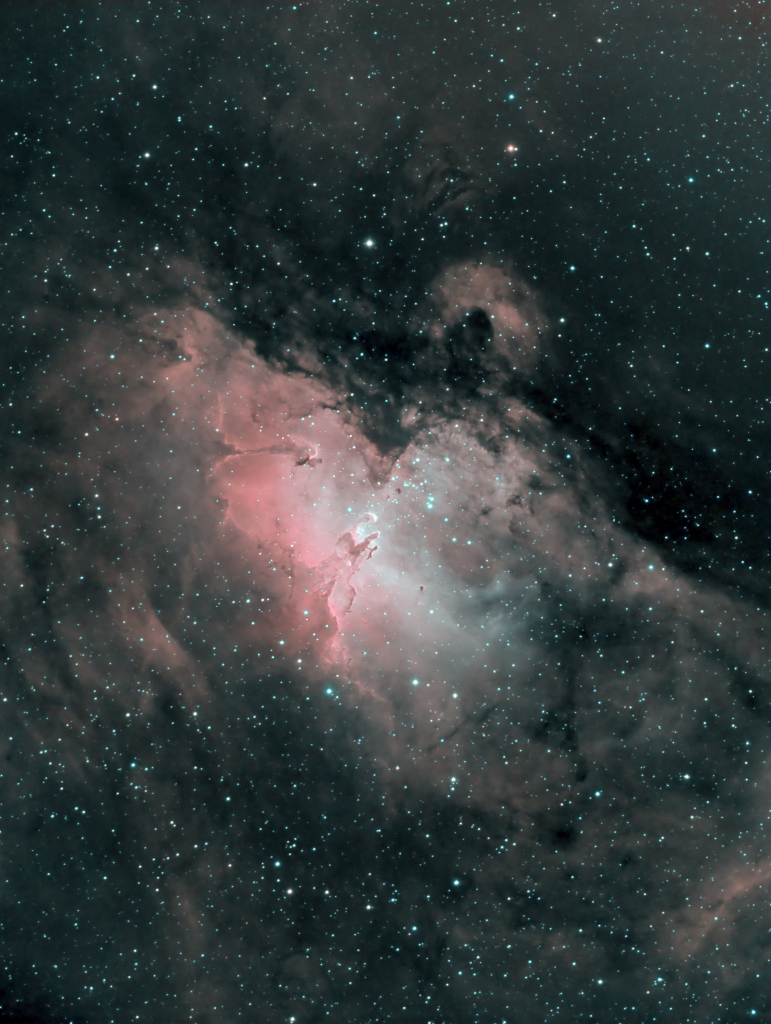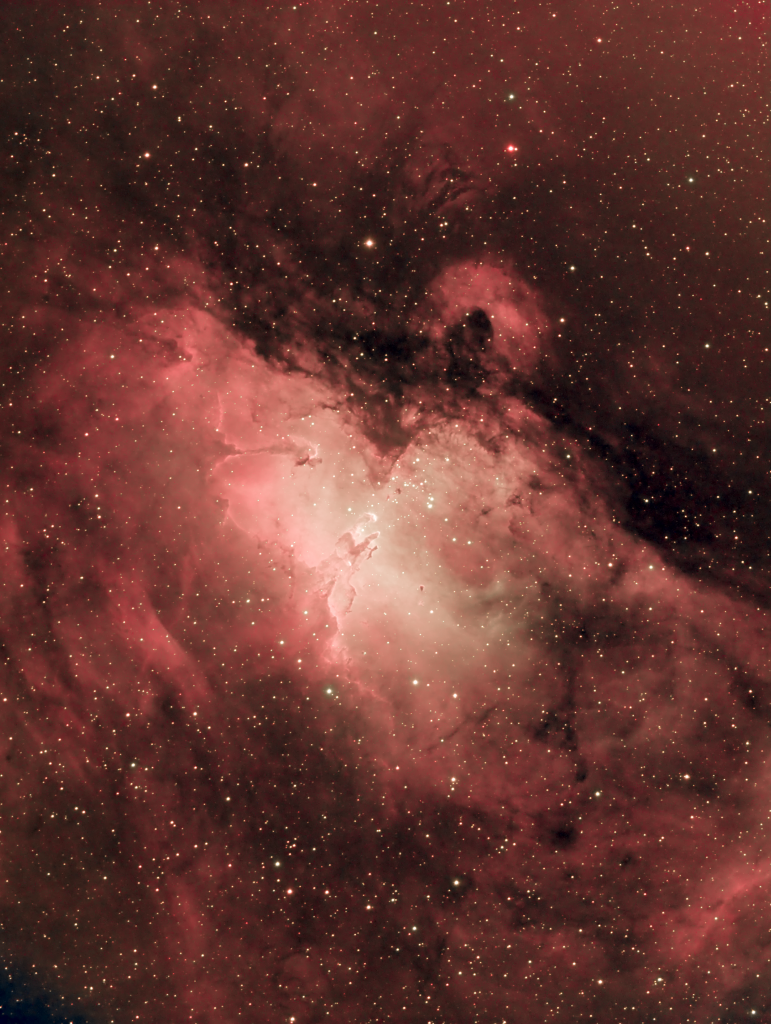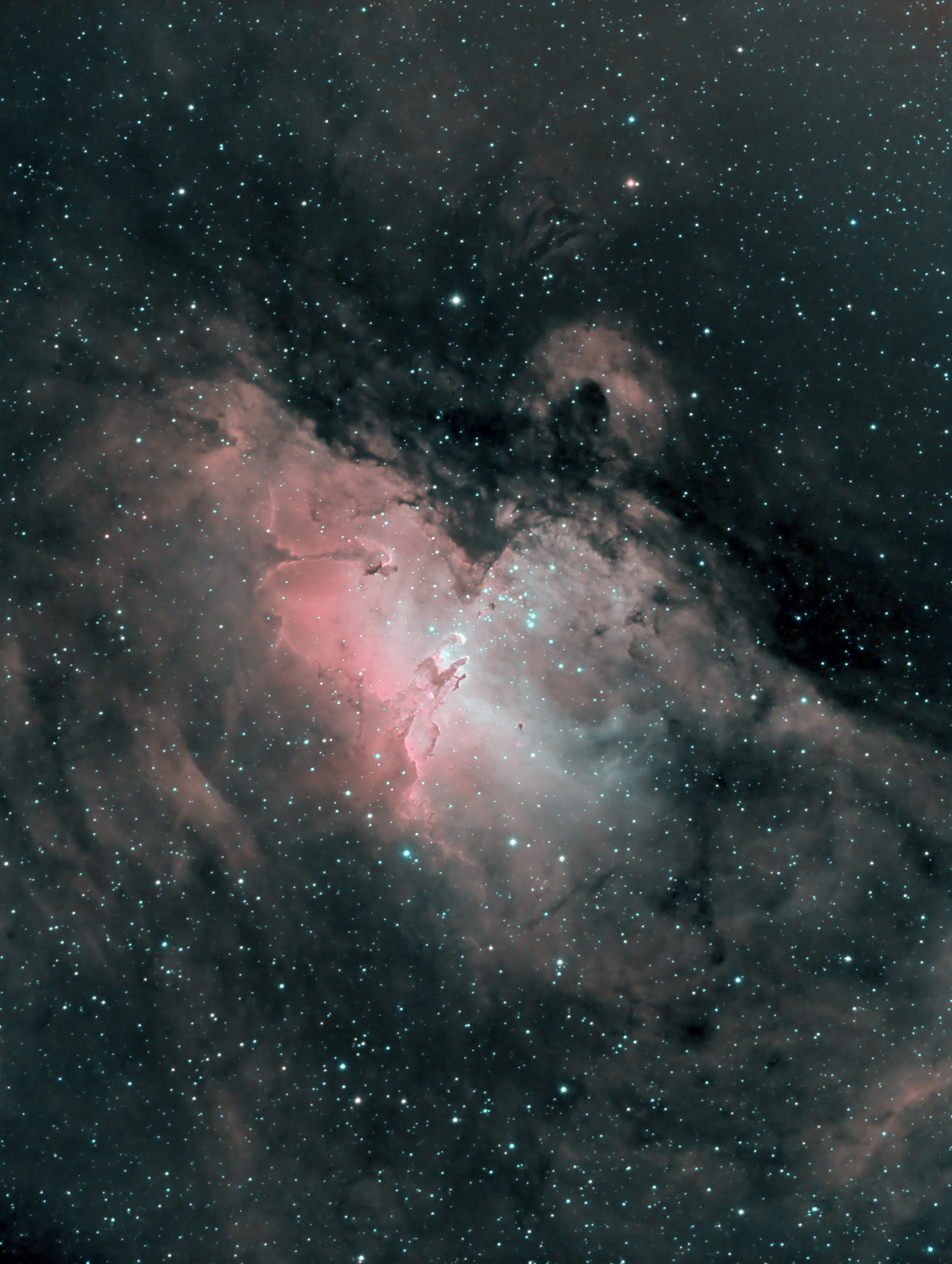
Similar Posts
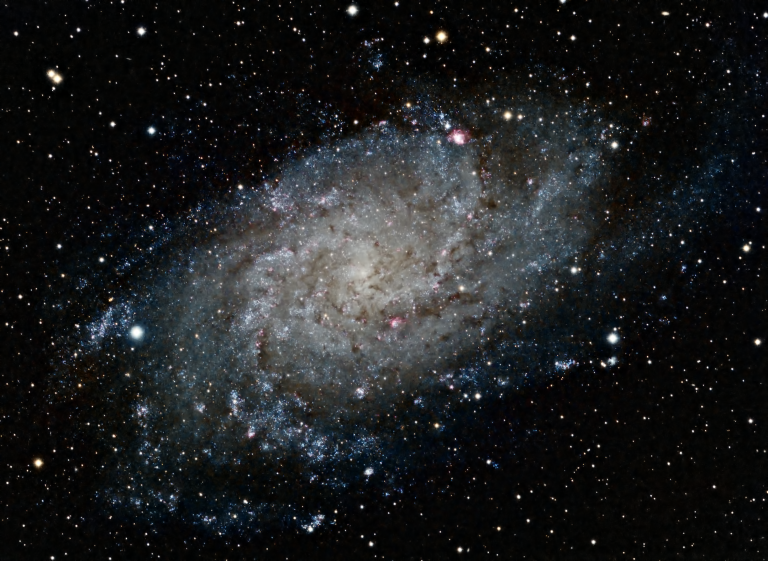
Triangulum Galaxy
Part of our Local Group of galaxies, the Triangulum Galaxy (M33) is about 3 million light years away and the most distant object visible to the naked eye under dark skies.
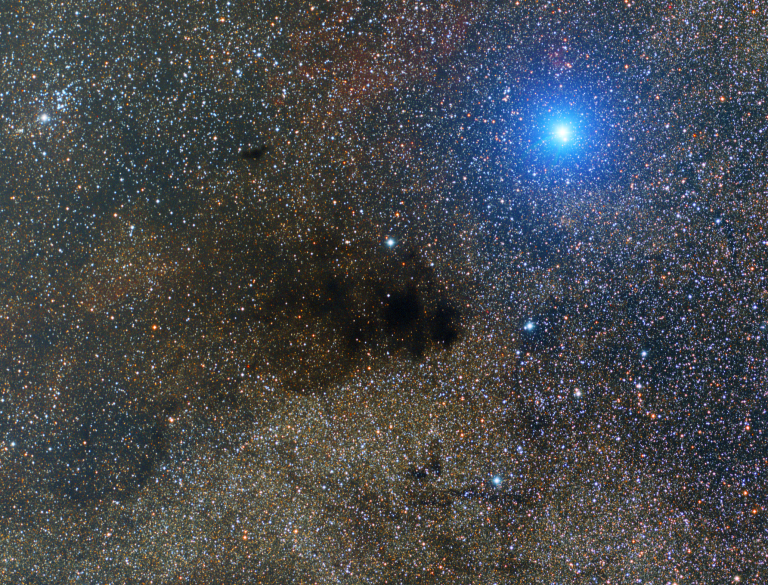
The Coalsack, Imaged from Australia!
It’s been really cloudy lately in Central Florida, so instead of imaging from my driveway, I’ve tried using remote observatories. This particular image was taken using a telescope in Australia, using a service called telescope.live. This is the “Coalsack nebula”, a dark cloud of gas obscuring the Milky Way in the Southern hemisphere. We’re looking…
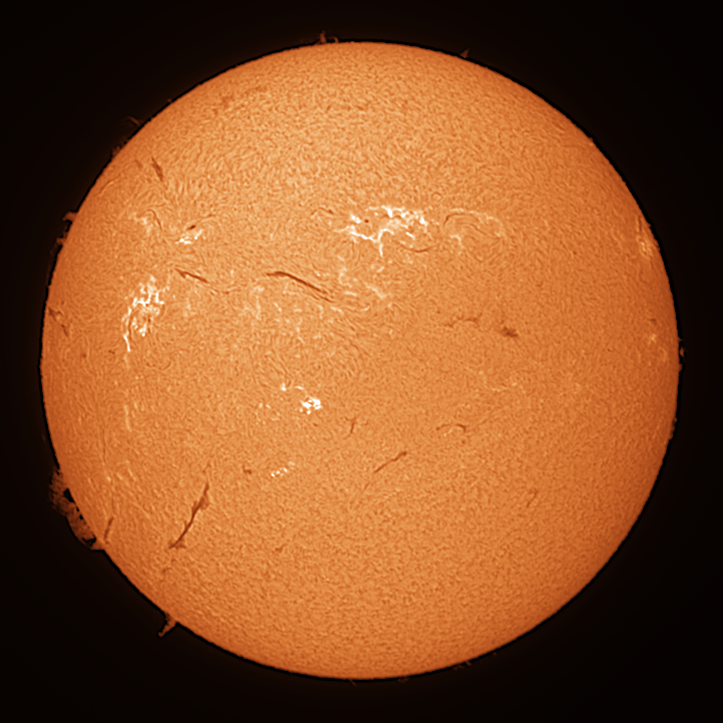
The sun is feisty lately.
This solar cycle has been quite a bit more active than forecast. It motivated me to up my game a little bit with solar imaging; this is my first image with a “double stack” setup that results in narrower filtering on the Hydrogen-alpha emissions from the sun. Lots and lots of prominences, filaments, and sunspots…
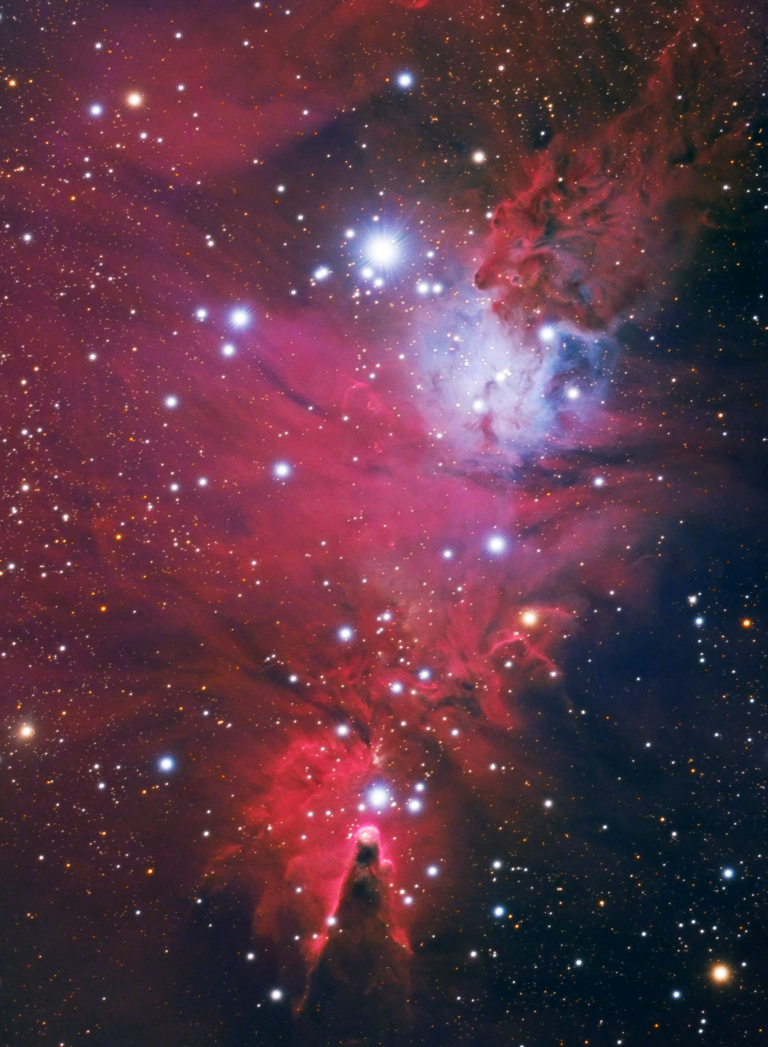
The Cone & Fox (revisited)
This is the Christmas Tree Cluster (turn the picture upside down and you might see it!) But the real focus here is the Cone Nebula at the bottom of the image, and the Fox Fur Nebula in the upper-right. Lots of red Hydrogen gas here being ionized by the young stars it formed. Also visible…
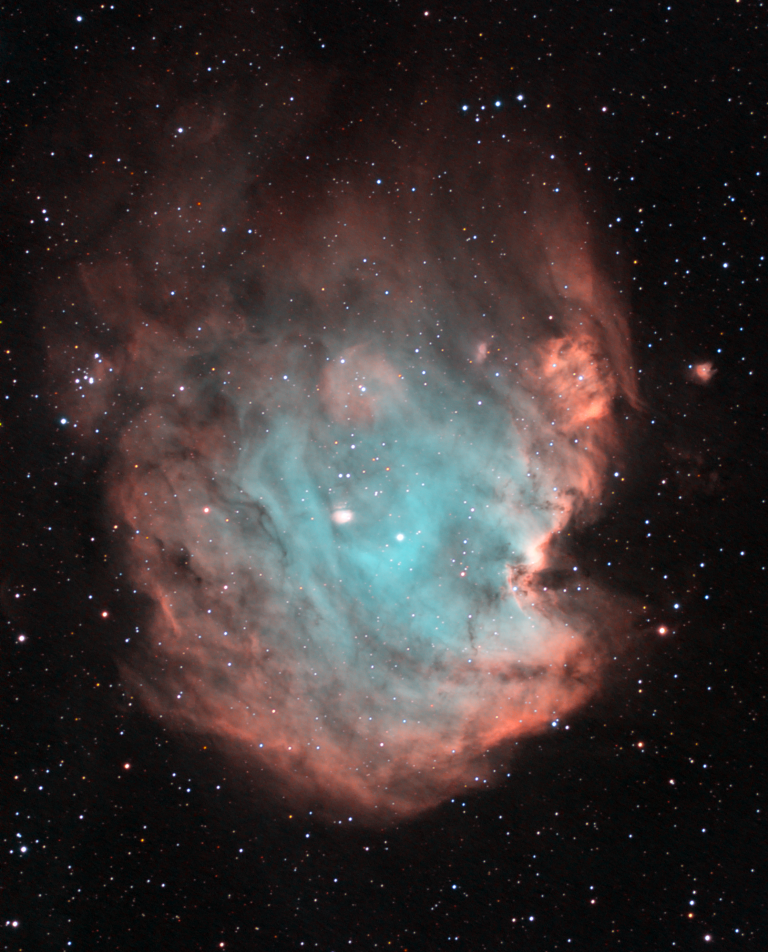
The Monkey Head Nebula
The Monkey Head Nebula is located about 6400 light-years away, in the constellation Orion. It’s a gorgeous cloud of gas surrounding a cluster of young stars. I processed this data a couple of different ways; one using the “Hubble palette” and another using my own color scheme. The colors represent different kinds of ionized gases:…

Will astrophotographers be replaced by robots?
Deep-sky astrophotography is the ultimate hobby for nerds; it combines endless tinkering with highly specialized technology, exploration of the cosmos, and constant challenges, achievements, and learning. But, could this hobby be automated to the point where anyone can do it? Products such as Stellina and Unistellar promise to deliver an experience where you can plop…

